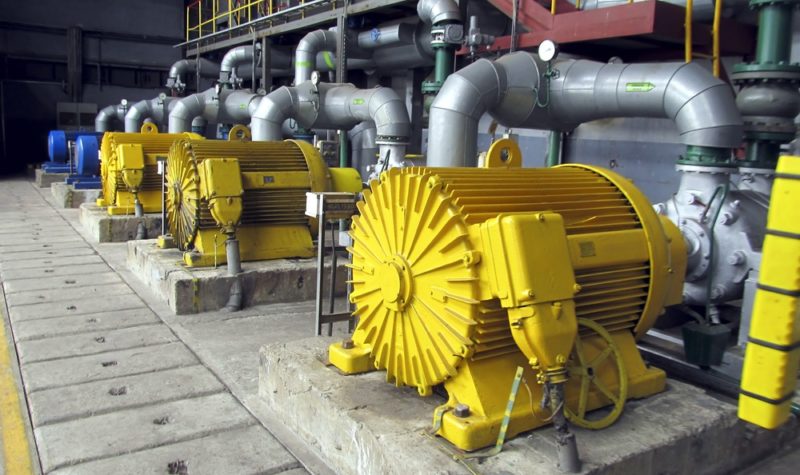Weir Group recovery to pump-up returns

I had started this rummage in the hope of finding an underpriced investment. What I have discovered is a fairly valued share with, up until now, strong upward momentum, which seems to be coming back to its established trend support at around 1,500p. If the price does bounce from there it supports the view that things are getting better for Weir on the back of a sterling devaluation and a mining and oil market that seems to be over the worst of its financial problems now that resources prices have improved and their operational costs have been greatly reduced.
Although pump and valve maker Weir Group (WEIR) has ascended some 23 per cent to 1,540p (last seen) from the depths, it was a pretty deep hole it got itself into. In the recent glory days of the hydrocarbon and metals boom the share price of this pump and valve maker had reached somewhere above 2,700p in April 2014.
The share price seems unlikely to head back to those heights any time soon! That would require the incredible replication of the supply and demand conditions of several years ago, when the world was a different place and iron and copper prices seemed to take on the scarcity value of precious metals. What portion of that share price will be regained, and when, is hard to say at this stage. But is it worth holding in the hope of undiscounted improvement? Does the stock offer enough value in terms of fundamental considerations to make it a useful longer term bet on a return to significantly better times and returns?
First, then: what does the market currently expect from Weir Group and what does it offer an investor now by way of returns?
Last year the company had top line sales of £1,917 million, which was 25 per cent lower than reported sales three years earlier. Given that companies recover costs from sales revenue, that level of lost sales proved a huge jolt to Weir’s financial management. In almost three years, earnings collapsed some 42 per cent. Last year to 1st January 2016, earnings per share came in at a reported 85.68p, putting Weir shares at 1,532p (last seen) on a historic price to earnings ratio of nearly 18 times. The sales and earnings decline is estimated to continue this year so that earnings per share are forecast at 65.4p and the prospective price to earnings ratio is 23.4 times. The market thinks that about two thirds of earnings will be paid out via dividends, giving a prospective dividend yield of 2.85 per cent.
Although that sounds well up with events for now, I note the share price, at the time of writing, looks as though it is close to what seems like a trend support line. Will it bounce off that and resume its rise? Until now, the Weir share-price momentum has been one of its attractions. Beyond that, are there other reasons for putting this share on a buy list?
One is anecdotal, hearsay talk that the company is doing better than expected. If true, that suggests that estimates of profits and earnings will be squeezed upwards in the coming months.
Very clearly, Weir Group with its overseas business must in principle be a beneficiary of the newly devalued and competitive exchange rate for sterling. It should also benefit from any continued strength of the dollar (which admittedly now looks a bit overvalued in times of geo-political and geo-economic uncertainty) as well as a recovery in the US economy towards a more historical mode of operation. An increase in US Fed rates would look like an oblique support for Weir’s prospects next year.
Another factor is the now very low cost of borrowing. This is a relative bull point because Weir is now a highly geared company. Last year, equity gearing by debt was in excess of 80 per cent. However, four fifths of that debt at the date of the last balance sheet was long term. It makes the company’s profits less of a hostage to fortune and possibly undermines the benefits of cheaper sterling.
The other bullish features of this company’s value include a significantly high book to price balance sheet asset backing. Net assets attributable to ordinary shares last year were a reported 600p; close to 40 per cent of the market capitalisation of the equity. Taking that into account by knocking 600p of the share price gives an adjusted ‘pure’ price to earnings ratio of 14 times on this year’s estimated 65.4p of earnings and 11.8 times next year’s current consensus earnings estimate of 77.6p a share. It should be pointed out that the balance sheet is dominated by intangible assets; even so, the book to price relationship does look supportive in valuation terms.
Last year the company reported (a slight improvement) operating cash flow which covered that year’s investment and annual dividend costs by 1.7 times. So on that basis the prospective estimated dividend (giving a yield of 2.8 per cent) looks more than adequately financed, although it is not a particularly high dividend yield except when the bank rate is 0.25 per cent and the highest long Gilt redemption yield is only 1.36 per cent. I add that operating cash last year was a margin of 12.7% on sales, even in a year when the company reported a statutory net loss of £158 million. That looks a very reassuring outcome in the circumstances.
Comments (0)